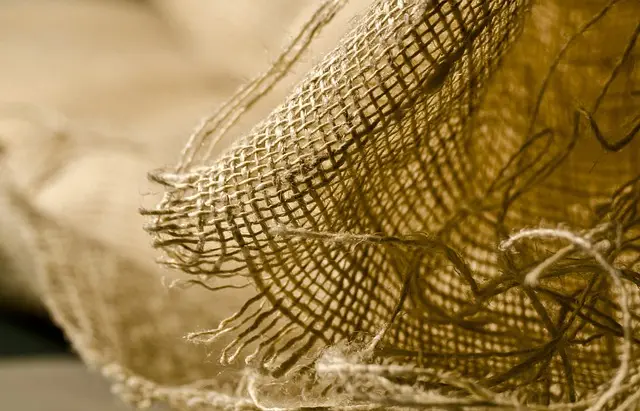Growing kratom (Mitragyna speciosa) in Utah is a viable and potentially profitable enterprise for local farmers looking to tap into niche markets. The state's semi-arid climate, with its long hot summers and mild winters, can support the growth of this Southeast Asian plant, though some environmental adjustments are necessary. Successful cultivation requires well-drained, slightly acidic soil enriched with organic matter, consistent moisture management to mimic its native humidity, and temperature control to avoid frost. Farmers must source quality seeds or cuttings from reputable suppliers and adhere to Utah's regulations on kratom cultivation. To produce a potent product, growers should monitor market trends, understand the plant's specific needs, and handle the harvest and drying process carefully to preserve alkaloid levels and ensure legality and high quality. This involves timing harvests according to environmental conditions to maximize alkaloid content, employing controlled drying methods, and following proper curing techniques for a market-ready product that aligns with state guidelines. Grow kratom Utah operations must be attentive to these factors to succeed in this specialized agricultural venture.
Exploring the niche cultivation of Malaysian Kratom (Mitragyna speciosa) in Utah presents a unique opportunity for local farmers interested in growing kratom, a plant that has garnered global attention due to its diverse uses. This article serves as an in-depth guide for those looking to tap into this lucrative market by providing insights on the specific climatic conditions and soil preparation necessary for successful cultivation in Utah’s distinct environment. From understanding the optimal growing conditions to mastering harvesting techniques and post-harvest care, each section of this piece is crafted to ensure high-quality Malaysian Kratom buds thrive under Utah’s skies. Grow Kratom Utah becomes more than a phrase; it’s a practical roadmap for aspiring farmers seeking to establish a sustainable and profitable kratom cultivation business.
- Uncovering the Potential of Growing Kratom in Utah: A Guide for Aspiring Farmers
- The Journey of Kratom Cultivation: Climate Considerations and Soil Preparation for Optimal Yield in Utah
- Harvesting and Post-Harvest Care: Ensuring the Quality of Malaysian Kratom Buds in Utah's Environment
Uncovering the Potential of Growing Kratom in Utah: A Guide for Aspiring Farmers

Growing kratom (Mitragyna speciosa) in Utah presents a unique opportunity for aspiring farmers looking to diversify their agricultural operations or enter a niche market. Kratom, native to Southeast Asia, has gained popularity due to its various potential health benefits and is in high demand across the United States. The favorable climate conditions in certain regions of Utah can provide an ideal environment for kratom cultivation, with adequate sunlight and arid periods that mimic the plant’s natural habitat.
To successfully grow kratom in Utah, it’s crucial to understand the specific requirements of the plant. Kratom requires well-drained soil rich in organic matter, consistent moisture without waterlogging, and a temperate climate that doesn’t dip too low in temperature, as kratom is sensitive to frost. Aspiring farmers should start by obtaining high-quality kratom seeds or cuttings from reputable suppliers, as the quality of the starting material directly affects the yield and potency of the harvested buds. Additionally, farmers must adhere to state regulations regarding the cultivation of kratom to ensure legal compliance. With careful planning, attentive cultivation practices, and a thorough understanding of kratom’s needs, growing kratom in Utah can be a lucrative endeavor for those interested in this unique crop. Prospective kratom growers should explore the market dynamics to maximize their profits and ensure that they are providing a product that meets consumer demands.
The Journey of Kratom Cultivation: Climate Considerations and Soil Preparation for Optimal Yield in Utah

In the unique agrarian landscape of Utah, cultivating Malaysian Kratom (Mitragyna speciosa) requires meticulous attention to both climate and soil conditions to achieve optimal yields. The journey of Kratom cultivation in this region is one that demands a deep understanding of the local environment. Growers in Utah must select strains that are well-suited to the semi-arid climate, which can vary significantly from the humid conditions native to Malaysia. The ideal location for growing Kratom in Utah would be an area with long, hot summers and cool winters, with protection from harsh winds and adequate water sources.
Soil preparation is another critical factor in the cultivation process. Kratom plants thrive in well-drained, slightly acidic soils rich in organic matter. Utah’s native soils often need amending to meet these requirements. A blend of composted materials, such as peat moss or aged manure, can improve soil fertility and structure, providing the necessary nutrients for Kratom plants to flourish. Additionally, incorporating a layer of mulch helps retain moisture and regulate soil temperature, which is particularly important during Utah’s hot summers. By carefully considering these climate and soil factors, growers in Utah can create an environment that supports the growth of high-quality Malaysian Kratom, ensuring successful ‘kratom utah’ cultivation ventures.
Harvesting and Post-Harvest Care: Ensuring the Quality of Malaysian Kratom Buds in Utah's Environment

The cultivation of Malaysian Kratom (Mitragyna speciosa) in Utah’s diverse and varied climates presents unique challenges and opportunities for growers aiming to produce high-quality Kratom buds. Harvesting these plants involves a precise timing that is influenced by the local conditions, including temperature, humidity, and sunlight exposure. Careful attention must be paid to the optimal growth stages of the plant; as such, cultivators should adhere to a strict schedule to ensure the maturation of Kratom buds aligns with peak alkaloid concentrations. The alkaloids mitragynine and 7-hydroxymitragynine are responsible for the plant’s effects and are most potent when the leaves reach their highest alkaloid content—typically at a specific stage of maturity. This requires attentive monitoring and knowledgeable decision-making throughout the growth process, from seedling to full bloom.
Post-harvest care is equally critical in maintaining the integrity and quality of Malaysian Kratom buds once they have been harvested. The handling and processing steps must be executed with precision to prevent contamination and to preserve the alkaloid content. Drying is a delicate process that can significantly affect the final product’s potency and user experience. Utilizing controlled drying environments, such as dehumidified rooms with precise temperature settings, helps in maintaining the natural aromatic compounds and active ingredients. Furthermore, proper curing techniques are essential to ensure the Kratom buds do not become overly dry or moisture-laden, which could compromise their effectiveness and shelf life. Growers in Utah must also navigate local regulations and ensure compliance with state laws regarding the cultivation of Kratom, ensuring that the final product is both legal and of the highest quality for consumers seeking its traditional uses.
Aspiring farmers in Utah interested in growing Malaysian Kratom buds can find success by understanding the unique climate and soil requirements of this tropical plant. This article has guided readers through the essential steps, from climate considerations and soil preparation to harvesting and post-harvest care, necessary to cultivate high-quality Kratom. By adhering to these guidelines, Utah’s diverse agricultural landscape holds promise for a new crop that is gaining popularity worldwide. Growing kratom in Utah presents an exciting opportunity for sustainable farming practices and economic diversification within the state. With careful attention to detail and a commitment to best cultivation techniques, the potential for a thriving Kratom industry in Utah is within reach.






